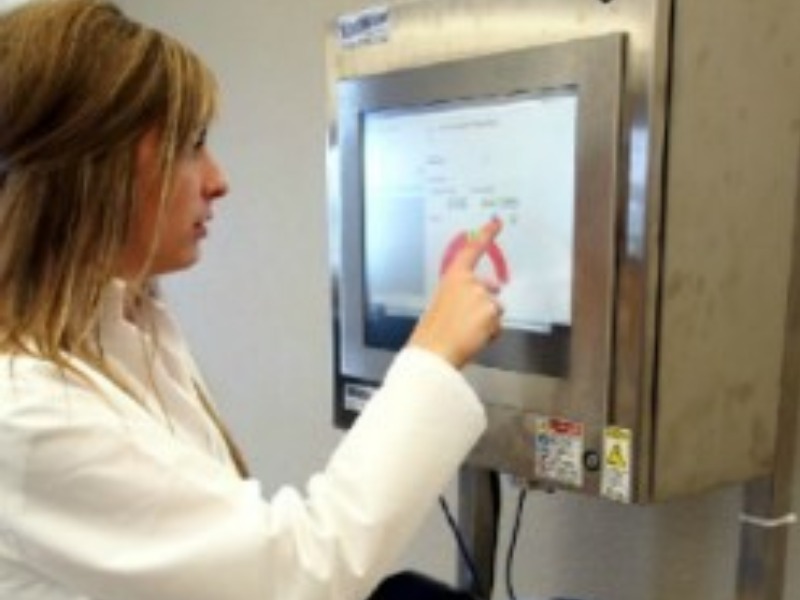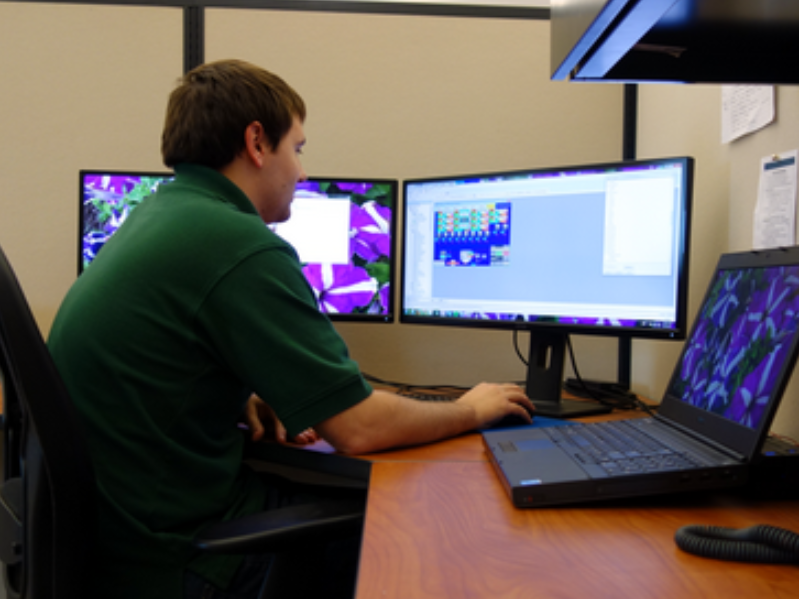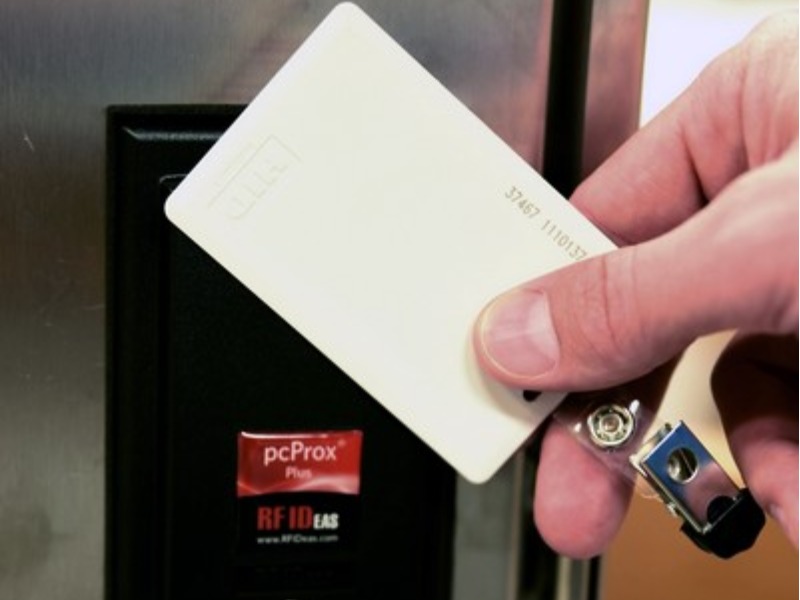

NorthWind Technical Services LLC
http://bit.ly/3YiWuTO
NorthWind Technical Services LLC
About company
NorthWind’s skilled team of engineers, programmers, and technicians have extensive process experience in addition to programming and design expertise in a wide range of industries.
NorthWind provides automation solutions for manufacturing facilities throughout the world. We also offer industrial electrical installation services in the USA.
Our headquarters is located in Sabetha, KS. The majority of employees and all panel fabrication activities are located at this facility. A second location was established in San Jose, Costa Rica in June of 2019 in order to better serve customers in Latin America. The Costa Rica office houses four employees that work in Service, Sales, and R&D.
Our skilled team of engineers, programmers, and technicians have extensive process experience in addition to programming and design expertise in a wide range of industries. The NorthWind PlantLOGIX™ software suite streamlines and simplifies programming, management, and maintenance of industrial processes while increasing visibility into what’s happening on the factory floor. State-of-the-art office technology and expertise allows NorthWind to provide programming and support services to clients anywhere in the world in a multitude of industries.
Our U.L. Listed control panel shop is located in a 10,000 sq. ft. climate-controlled facility that is fully-equipped to fabricate, test, and ship control panels of any size. High standards and advanced manufacturing technologies used by NorthWind ensure that control panels are delivered onsite on time and ready to be installed.
NorthWind strives to achieve high standards that meet customer needs and company stability. The company has been Control Systems Integrators Association (CSIA) certified since 2010 and continues to employ CSIA’s Best Practices and Benchmarks in order to provide the best value to its customers, combining technical proficiency with sound business practices.
NorthWind is also an accomplished Rockwell Automation Solution Partner, providing proven services and solutions that meet our customers’ automation needs. Finally, NorthWind was named CSIA Integrator of the Year in 2019, a prestigious national award given to controls system integrators that demonstrate cutting-edge technology and cost effective solutions for manufacturers
Products
Company News
 Market Information
Market Information

1+ MIN





21/12/2023
Northwind Receives kansas Department of Commerce award
We are delighted to announce that NorthWind Technical Services has been named a Northeast Region Award of Merit winner in the Manufacturing/Distribution category for the 2023 To the Stars: Kansas Business Awards. The recognition was presented by Ernie Beaudet, Northeast Business Development Project Manager. The To the Stars Competition, an annual event hosted by the Kansas Department of Commerce, recognizes businesses for their exceptional contributions to the Kansas economy and local communities. Ernie Beaudet highlighted NorthWind's outstanding achievement, noting, 'In the Manufacturing/Distribution category, NorthWind Technical Services stands out as one of the 37 Merit winners statewide. Out of 4,470 businesses, this places NorthWind in the top 1% of Manufacturing/Distribution enterprises in the State of Kansas.' Mike Bosworth, CEO of NorthWind, expressed appreciation for the recognition, stating, 'Being acknowledged by the Kansas Department of Commerce is a testament to our hard work and commitment. These awards reinforce that we are consistently moving in the right direction, always striving to deliver excellence.' by Northwind Source: All Pet Food
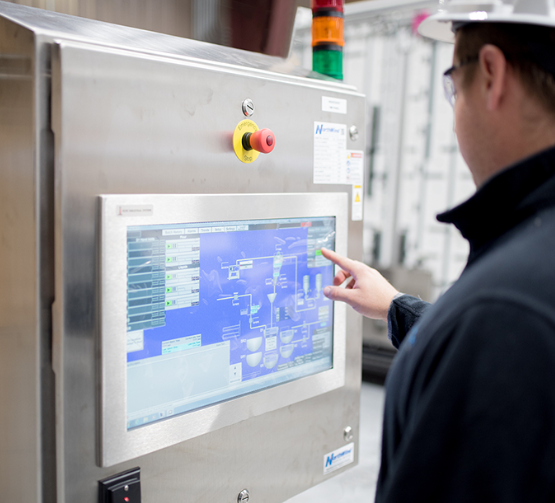 Manufacturing Process
Manufacturing Process

2+ MIN





24/11/2023
Northwind´s expertise in pet food automation
Producing high quality pet food is what your brand is known for. At NorthWind, they help you maintain that reputation through innovative and reliable automation solutions. Their goal with every project is to have your plant running as efficiently as possible. Plant Integration Your plant consists of many different pieces of equipment working together to produce quality pet food & treats. NorthWind specializes in tying all those pieces together to create one seamless control system.This full plant automation solution provides increased plant visibility and allows you to monitor your entire plant no matter where you are. They connect your plant floor to the rest of business by integrating to your ERP System. Formula Management NorthWind's Formula Management software has the flexibility you need with an easy to use interface. BatchLOGIX® formula management software was built to handle the dynamic processes that are common with extruded pet food and treat plants. Reach maximum product consistency with formulas that contain both process & ingredient set points and handles both batching & continuous processes. With BatchLOGIX, your recipes can be as flexible as you need them to be. Customizable set points for both ingredients and process equipment can be configured in the system. Historical data can be accessed through easily customized reports to target specific information using filters. Once created, reports can be exported to Excel, WORD, RTF, or PDF for sharing. Traceability Track ingredients from the time they enter the plant to the time they leave. Trace ingredients through your entire manufacturing process with lot tracking, storage, and reporting capabilities. Lot numbers for liquid and dry ingredients can be traced through multiple systems from source to finished product. Data Management NorthWind makes it easy to collect and use the data that is already available in your plant operation so you can make better, more informed decisions. They collect information about everything from critical control points and run parameters to ingredient usage and system alarms. With this information they provide KPI dashboards and setup equipment maintenance alerts. All information is stored and ready for analysis and comparison to real-time data. Their online web reporter tool makes this easy! About NorthWind NorthWind is an automation company in Kansas providing controls and automation solutions to manufacturing facilities around the world. Their skilled team of engineers, programmers, and technicians have extensive process experience in addition to programming and design expertise in a wide range of industries. You are invited to know more! By: All Pet Food
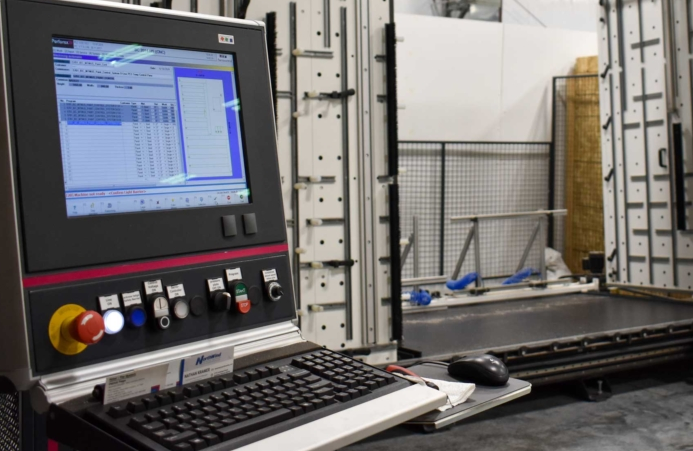 Manufacturing Process
Manufacturing Process

5+ MIN





06/11/2023
Manufacturing execution system capabilities
MES solutions replace traditional paper-based manufacturing procedures and implements a proactive approach to manufacturing execution. Sometimes manufacturers implement reporting functionalities that fall within the scope of MES and sometimes a full-scale MES solution is integrated across the entire plant. Regardless of the size of the solution, the results of implementing MES include decreased costs and increased support for continuous improvement and lean initiatives. MES is used in conjunction with ERP and SCADA systems, bridging the daily plant operations to the rest of the business. Manufacturing Execution Systems can tie into existing batch management systems, such as BatchLOGIX®, and use the existing inventory and production information to give further insight into yield and production metrics. MES connects existing ERP systems, PLCs, and databases. The combined data from those sources can create unique metrics, reports and dashboards that streamline operations, improve productivity, and ensure quality. Using a versatile platform like Ignition Perspective, the capability exists to connect all those data sources, create flexible dashboards, custom reports, custom modules, and Ignition's platform is designed for mobile access. REAL-TIME DATA MES platforms provide real-time production information. This valuable information opens the door for quick production snapshots. Dashboards combine real time operating rates and statuses with features like historical run information and production goals. Doing this provides an efficient way for a user to quickly see production status and identify areas that need attention. HISTORICAL DATA With comprehensive access to plant-wide data, MES offers extensive reporting capabilities. This is another area where the Ignition platform is helpful. Leveraging Ignition's Reporting module, information can be gathered from all the different data sources (ERP, Control System, and SCADA) allowing for the creation of tailored reports that effectively convey data for analysis. Through Ignition's broad array of device drivers, information from data from all parts of the plant can be logged and displayed in a central location. Additionally, the Ad Hoc trending tool proves to be a valuable asset, facilitating easy trend analysis of data points from all sources and saving those trends for later analysis. PERFORMANCE ANALYSIS Centerlining includes adjustable thresholds for each device set the acceptability and alert levels for each indicator. Selected KPIs (key performance indicators) such as Right first time (RFT), Rework, Scrap, Process capability (Cpk), and Overall equipment effectiveness (OEE). With one click, the dashboard can provide a detailed analysis of causes of shutdowns and rejects, batch quality rates, and other production indicators. COMMON MES FEATURES With all this data, both real-time and historical, there are many different modules that can be implemented. The goals and priorities of each plant and workstation guide which modules should be implemented or if a custom module needs to be developed. Below is a list of common modules. Scheduling Provides a global view of the planned production orders. This module can include changeover information, anticipated production time, equipment and materials needed with specific job details to complete the order. Work In Progress (WIP) Inventory Management Track and manage inventory through the different stages of production. MES accomplishes this by helping management fine-tune forecasting by providing real-time inventory audits. With the connection to the ERP system and the control system, validating the inventory levels between the two systems is now automatic. This eliminates the need to manually verify inventory levels on the production floor with what is on the books. The system can also verify materials will arrive in time to complete orders by looking at the delivery data on purchase orders and running it against the upcoming production schedule. Recipe Management A recipe consists of a list of ingredients, ingredient amounts and sequence for combining those ingredients, and the amount to be made (batch size). Create consistency from product to product and run to run as well as make the best use of resources to minimize waste and streamline the manufacturing process. Production Tracking and Dispatch Manage the bidirectional flow of production data in real time between the ERP and the plant floor. Lot Tracking and Tracing From raw material receiving through final product, lot numbers are traced throughout the entire production facility. MES allows for quick recording of batches of raw material, semi-finished products, and finished products, utilizing product genealogy which tracks raw materials, equipment used, dates, quantities, lot, and serial numbers. Quality management and Control Manage the quality of manufacturing processes and units including quality deviations and exceptions. Integrate quality check reminders and recordings for QA. These can be as automatic as implementing density and moisture sensors or more manual with an alarm signaling the operator to complete quality assurance (QA) checks and record them in the system. Each records the information to the MES system for the QA team. Preventive Maintenance Optimize the planning of preventive maintenance operations to reduce the impact on manufacturing. OVERCOMING COMMON CHALLENGES TO IMPLEMENTING MES Implementing a Manufacturing Execution System is a large undertaking and to provide the best solution, collaboration between the integrator and the manufacturer must be frequent. A common challenge is providing the right information and tools to the right audience. When developing dashboards and reports, it is very important to remember who is using the feature and what the goals and priorities are. An operator will want to see different metrics and widgets than someone in a management role. When developing dashboards and reports it is very important to remember who will be using the feature. Separate dashboards for different groups can be created, or widgets can be dynamically hidden/shown depending on the log in permissions and who is viewing the application. Often facilities have used multiple integrators and software systems throughout the plant. This poses a challenge to gathering data in an accurate and efficient way, as there are a variety of sources. NorthWind maintains consistency wherever possible and keeps documentation on where metrics are pulled in from. Documentation is available straight from the MES project. The user can see a description of how a widget works and where the information is being pulled from, whether it is from BatchLOGIX database, a customer's existing ERP system, or a PLC Program. A key to overcoming these challenges is to have open and effective communication with plant personnel to ensure there is clarity on what information is needed. This starts with setting a detailed scope for each area of the system to avoid unnecessary and potentially costly distractions. NorthWind provides a detailed design/development/deployment process and holds meetings with the customer throughout each stage to discuss the project progress and steps to be taken to reach the next stage. Manufacturing execution systems identify inefficiencies and optimize production. This powerful system can be everything from Overall Equipment Efficiency (OEE) for one area of a plant to a fully integrated solution with a paperless plant floor and everything in between. Implementing these features takes deep process and control system knowledge and because every plant has different processes, machinery, KPIs, and process targets the best solution is going to be a tailored fit. At NorthWind we utilize production and process data for plant optimization with a manufacturing execution system developed for you, with you. Learn more about NorthWind's MES Solution. By: Sydney Bosworth Source: NorthWind Technical Services
 Manufacturing Process
Manufacturing Process

4+ MIN





29/09/2023
Formula management software for pet food production
Automation streamlines the manufacturing process and allows manufacturers to easily monitor and make modifications to the production process from anywhere. Implementing good formula management software gives manufacturers product consistency, lot tracking, and production reports, and it can be easily integrated with ERP (Enterprise Resource Planning) software for a seamless solution. Importance of formula management Implementing the right formula management software is key to maximizing plant performance. This software manages and stores all the formula information for the plant, as well as important process information for lot tracing and production analysis. This includes raw material delivery and storage, final product storage, mapping materials throughout the entire process, and important batch, campaign, and ingredient usage details. It is worth spending time researching formula management software to ensure the package implemented aligns with your business needs. Common Features • Create and store recipes • Recipe modification • Ingredient location mapping • Ingredient parameters • Lot tracking • Production records • Campaign Management Manufacturers often use several software packages to have these features and encompass all processes within the plant. When looking at a system that can fully handle all production needs, features, additional advanced features are needed. Advanced Features • Recipe modifications from the HMI • Ingredient location mapping • Process variables • Micro-ingredients and micro-batching management • Integration with ERP and MES (Manufacturing Execution System) software • Capability of handling both batching and continuous processes Formula management software, such as NorthWind's BatchLOGIX®, provides all the common and advanced features in one robust platform. With features such as material mapping, recipe creation, process variables, micro-ingredient tracking, and production reports, it's able to fulfill production demands. NorthWind offers additional integration that connects the plant floor to the rest of the business. By integrating with the plant's ERP system, data continually transfers back and forth from both systems for seamless and high-level business management. Formulas Formulas for pet food production are complex and need a robust piece of software to handle all variables and both batching and continuous processes within the plant. Often recipes only refer to the amount of each material needed, but there is a lot more that goes into establishing product consistency than simply ingredient amounts or weights. To produce a consistent product, formulas should include both ingredient and process variables and the entire production process from micro-ingredients through continuous extrusion. Ingredient Parameters Ingredient parameters include setpoints, rate tolerances, and upper and lower setpoint trim allowance. Setpoint is the target ingredient rate, tolerance is a percent of error acceptable, and trim allowance is the amount that the setpoint can be adjusted by the operator during production. For example, an ingredient has a setpoint of 100kg/hr, tolerance at 10%, and a trim allowance of 10kg/hr. The operator could adjust the ingredient rate and call for 110kg/hr. The actual rate could potentially be 121kg/hr and still be within the acceptable tolerance. Process Variables Process variables are all the mechanical setpoints on the production floor. For example, a few of the extruder's common process variables include Head Temperatures, Die Temperature, and Die Pressure. These variables are critical for complying with quality standards, making them a vital piece of the formula. Micro-ingredients Batching Hand-batched micro-ingredients are important and often high-dollar ingredients that play a significant role in the final product. This part of the process is often handled separately from the formula management software. Because this step is not included in the formula management and plant automation system, errors often occur during the weighing and lot tracking of these ingredients. BatchMATE® by NorthWind connects the hand batching step to the rest of the plant by automating the hand batching process and including the steps in the formulas. Once connected, BatchLOGIX can track the lots and produce production reports. Lot Tracking Lot Tracking is one of the most critical aspects of any Formula Management Software. The lot tracking process starts from the receipt of raw materials through the final product. By tracking lot numbers in this way, the system can pull specific lot information for each campaign and batch. This is invaluable when a non-compliant lot or a major fault is detected by the quality department. Using the information provided by the lot tracking feature, production data can be analyzed, and contaminated ingredients and products can be identified, isolated, and pulled from the batch or campaign. Production Reports Production Reports are key for any Formula Management Software. The information provided in these reports helps in scheduling production and can be helpful in identifying the cause of missed targets and other inefficiencies. Production reports can also identify when to schedule maintenance and other necessary stops for production. Ingredient usage and run reports are also available to ensure quality and production targets are being hit. Some of the key benefits of good production reporting are business insights, higher customer satisfaction, higher efficiency, and better data-driven decisions. ERP Integration Integrating the plant floor with the rest of the business allows for production data to be seamlessly used throughout the business. It is common for APIs (Application Programming Interfaces) to be written for connecting the plant floor to the ERP system. Having the ability to share data between the different systems is a huge advantage to companies, with this they can schedule production and analyze production in real-time. When all the data is readily available, business decisions are now easily backed by data. Conclusion Whether scaling recipes into a batch or metering ingredients into a continuous system, quality formula management software is key to maximizing plant performance and increasing product consistency. BatchLOGIX® has the scalability to accommodate systems of any size with the flexibility to incorporate all processes within a pet food production facility. By: Eduardo Martinez - Project Manager - NorthWind Technical Services Source: All Pet Food Magazine
 Manufacturing Process
Manufacturing Process

1+ MIN





05/07/2023
NorthWind Extrusion Controls
NorthWind extrusion controls ensure optimization of your system through implementation of specific sequencing during the startup and shutdown of equipment. This in combination with critical alarms and notifications, will help keep your extruders running and minimize wasted product
CRITICAL FACTORS
One of the most critical factors in any extrusion process is the consistent and accurate delivery of materials. Formulas for extrusion are typically set up based on a primary ingredient. All other ingredients in the formula are adjusted based on the level of the primary ingredient. NorthWind's Loss-In-Weight algorithm is designed to maintain consistency in primary ingredient rates even during refill. As the primary rate is increased or decreased, our system automatically adjusts the rates of all ingredients quickly, ensuring that the finished product is always within spec.
RECIPE MANAGEMENT
BatchLOGIX®, a robust recipe management tool was originally designed for batching systems is versatile enough to incorporate continuous formulas as well. BatchLOGIX offers lot tracking and tracing of ingredients which are critical features, especially in food and pet food applications. These features can also be extended into the batching and ingredient delivery systems seen in most extrusion plants.
ALEARN MORE ABOUT BATCHLOGIX
by Northwind
Source: All Pet Food
 Manufacturing Process
Manufacturing Process

3+ MIN





06/04/2023
Successful control system modernization
The most obvious illustration of this is systems that have obsolete electrical components and legacy software that is no longer actively supported by original manufactures. As we move into Industry 4.0, the old standard of each individual machine having an isolated 'island' of automation is being replaced by more integrated automation systems that communicate to each machine, sharing and creating significantly more data than even 15 years ago. With this added data is the desire to connect the plant floor data to business systems. More and more facilities want production orders to come down from ERP systems to process controls, producing real-time consumption data that is utilized to reduce inventory. To stay competitive, many facilities have made the business decision to modernize their legacy machine and controls systems. Typically, this can be done at a fraction of the cost and time of a greenfield project. Modernizing a control system A control system upgrade can bridge all these gaps by integrating mechanically sound process systems with a modern automation system. At a minimum these projects consist of substantial replacement of obsolete components, sometimes even retaining the original PLC logic. These projects can also be expanded to include high level integration of different machines, adding new machines to an existing system, ERP integration, and ground-up re-writes of logic and operator screens. Modernization projects are known to be complex, especially because engineers are required to work inside an existing framework as opposed to building a system from the ground up. There may be missing documentation or drawings. Additionally, some field modifications may not be included in the drawings. Minimizing production downtime is a significant concern, so the implementation window to get the system back in production is often small. A successful modernization project considers these factors and others during the initial phases of the control system upgrade. Key to any project is developing a deep understanding of the existing system. This is paramount to implementing the upgrade without breaking what is currently in place. Best practices As a Senior Project Manager at NorthWind, I have implemented many modernization projects throughout my career. In this time, I have found a few tried and true practices that lead to a successful control system upgrade. Customer/Project Management Planning When modernizing any system, a collaboration between customer and Project Management is a must. Through this collaborative approach, a forward-looking plan is made to include functionality, risk avoidance, down time reduction, migration solutions, project phasing, etc. to ensure the project scope is clearly outlined and understood. Design Trip There is a misconception that modernization will 'break' the current system and lead to significant downtime. Conducting an initial design trip is instrumental for designing a project that takes into consideration the existing system and its functionality and designing a system that will meet the customers scope and needs. Before any modernization takes place a review of pre-existing equipment, electrical, design and functionality is conducted. Any existing drawings and documentation are also thoroughly reviewed. In the event there are no drawings of the existing system, a new set will be created. Safety Considerations There are misconceptions involving safety considerations: Many people think that safety guidelines are grandfathered in by the date of the original mechanical equipment installation. However, on any substantial electrical modernization project, safety circuits and functionality need to be reevaluated. Electrical Installation One of the biggest concerns with control system modernization is the amount of time it will take for installation and requalification. Working with an industrial electrician with the expertise to understand how to work within schedule constraints and provide creative, custom solutions to meet outage windows is critical. Installation can be done in phases, during production downtimes, or any other number of solutions to keep downtime at a minimum. Benefits of modernization Updating hardware and software with better automation control systems can improve plant performance, increase productivity, improve communication between the process information and business systems, provide useful production data, provide alerts to improve response times, increase plant system security and perform system diagnostics. With NorthWind you can achieve an effective modernization project that manages safety, health and environmental risks, get documentation for field devices in the system, and be assured of a more efficient, consistent and optimized operation, with the support of the system for years to come. Contact us today to talk about your system. By: Blake Bennett – Automatización Source: Northwind Technical Services





